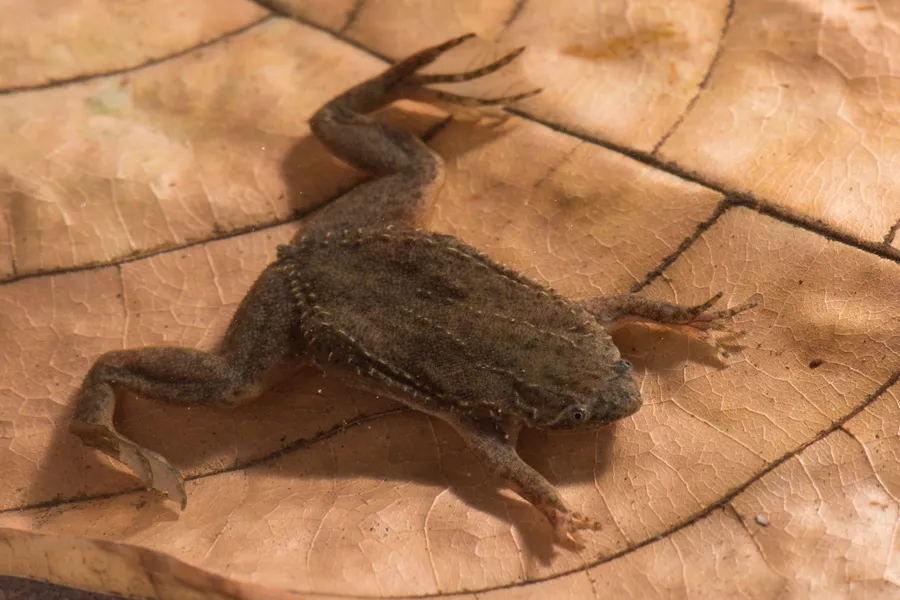Amphibians A-to-Z

Carvalho’s Surinam Toad
Carvalho’s Surinam toad (Pipa carvalhoi) is a species of frog in the family Pipidae, native to South America. Here’s some information about this unique amphibian:
- Physical Description: Carvalho’s Surinam toad is a relatively small amphibian, with adults typically ranging from 5 to 7 centimeters (2 to 2.75 inches) in length. It has a flattened body with a broad, triangular head and eyes positioned on the top of the head. Its skin is rough and covered with small, wart-like projections. One of its most distinctive features is its flattened body shape, which is adapted for a fossorial (burrowing) lifestyle.
- Habitat: Carvalho’s Surinam toad is found in freshwater habitats, including slow-moving streams, rivers, ponds, and marshes, throughout its range in South America. It is primarily associated with aquatic habitats with dense vegetation and muddy or sandy substrates, where it can bury itself to camouflage and ambush prey.
- Behavior: Carvalho’s Surinam toad is a primarily nocturnal and secretive amphibian, spending much of its time buried in the substrate or hiding beneath rocks and vegetation. It is a skilled burrower and can dig into the soft substrate using its powerful hind limbs and specialized digging adaptations. It is also an adept swimmer, using its webbed feet to navigate through the water.
- Diet: Carvalho’s Surinam toad is carnivorous and feeds primarily on a variety of small invertebrates, including insects, worms, crustaceans, and other aquatic prey. It is an ambush predator, lying in wait for prey to pass by before lunging forward to capture it with its mouth.
- Reproduction: Carvalho’s Surinam toad is known for its unique reproductive behavior, which involves the female laying eggs on the back of the male, where they become embedded in the skin and form pockets. The male then carries the eggs until they hatch into fully formed tadpoles, which emerge from the pockets as miniature toads. This reproductive strategy, known as “back-brooding,” is an adaptation to life in aquatic environments with few suitable breeding sites and helps protect the developing offspring from predators.
Overall, Carvalho’s Surinam toad is a fascinating and highly specialized amphibian species with unique adaptations for life in freshwater habitats. Its reproductive behavior and flattened body shape make it an intriguing subject for scientific study and conservation efforts aimed at protecting its habitat and ensuring its long-term survival.
Related posts:
Wonder Nature
0





 Total views : 3581
Total views : 3581